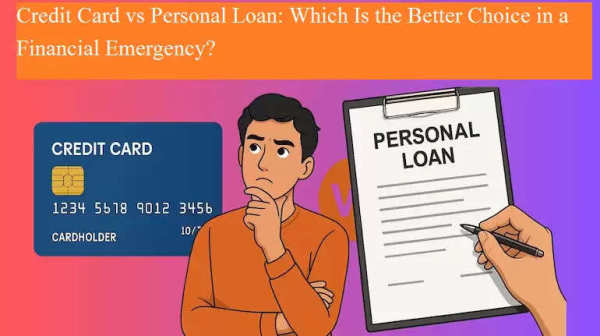
When unexpected financial needs arise—whether due to a medical emergency, school fees, or urgent home repairs—many people are left choosing between two common options: credit cards or personal loans. Both are unsecured forms of borrowing that don’t require any collateral. But which is more suitable for you depends on the urgency, amount needed, repayment capacity, and long-term financial impact.
Let’s explore the pros and cons of both, and help you decide which one to use when time and money are of the essence.
Gone are the days when credit cards were used just for shopping or paying utility bills. Today, they can also be used for paying rent, school fees, and even medical expenses. Some credit cards also allow cash withdrawals from ATMs, although this facility comes with high interest rates and cash withdrawal fees.
Instant access to funds—no waiting period
Grace period of 30 to 45 days, during which no interest is charged if dues are paid in full
Reward points, cashback offers, and discounts on spending
No paperwork or approval needed for existing cardholders
However, there’s a flip side.
High interest rates after the grace period—can go up to 36% or more annually
Late payments hurt your credit score and lead to penalty fees
Easy to overspend, which may lead to a debt trap if not managed carefully
Best Use Case: Credit cards are suitable for short-term, small financial needs (₹20,000 to ₹30,000) that you can repay within a month or two.
If your financial requirement is large and can’t be repaid quickly—say for a wedding, major medical treatment, or house renovation—then a personal loan is the more structured and safer option.
Access to larger loan amounts, typically from ₹50,000 to ₹25 lakh
Fixed monthly EMI plans for structured repayment
Loan tenure ranges from 12 to 60 months
Funds are credited directly to your bank account after approval
Usually comes with lower interest rates than credit cards (10%–24% annually)
Takes 1–3 business days for disbursal after approval
Requires documentation and credit score checks
Some lenders charge processing fees and pre-payment penalties
Best Use Case: Ideal for large financial needs where longer repayment tenures are required.
| Feature | Credit Card | Personal Loan |
|---|---|---|
| Loan Amount | Within card limit | ₹50,000 to ₹25 lakh |
| Interest Rate | 30–42% (after grace period) | 10–24% per annum |
| Disbursal Time | Instant while spending | 1–3 days after approval |
| Repayment Mode | Minimum due or full payment | Fixed monthly EMI |
| Best For | Short-term, low-value needs | Long-term, high-value requirements |
Opt for a credit card if:
You need funds immediately
The amount is small
You’re confident of repaying within the grace period
Go for a personal loan if:
You need a large lump sum
You prefer fixed EMIs
You want a longer tenure to repay without affecting your monthly budget
Both credit cards and personal loans have their benefits and limitations. Credit cards are fast and flexible, but they come with high interest rates if dues are not paid on time. Personal loans offer higher amounts and structured repayment, but the approval process takes time and involves documentation.
In short, use a credit card for immediate, short-term needs that you can repay quickly. Choose a personal loan for planned, long-term expenses that require more funds and flexible repayment.
Whatever you choose, remember: financial discipline is key. Borrow only what you need, and repay on time to maintain a healthy credit profile.
🔍 Tip: Always compare interest rates, processing fees, and repayment terms before making a decision.